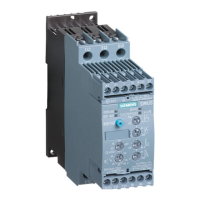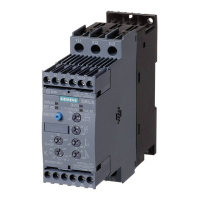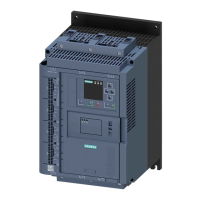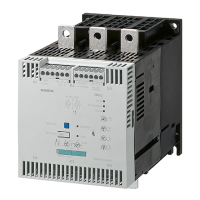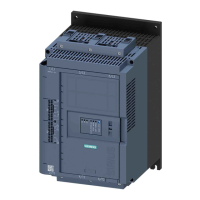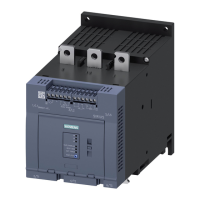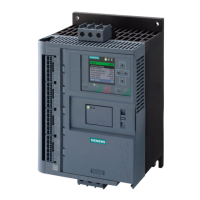Device Functions
SIRIUS 3RW44 System Manual
6-20 GWA 4NEB 535 2195-02 DS 04
Tripping class
(electronic overload
protection)
The tripping class (CLASS) indicates the maximum tripping time in which a
protective device must trip at a value 7.2 times that of the rated operating current
in cold condition (motor protection acc. to IEC 60947). The tripping
characteristics indicate the tripping time in relation to the tripping current (refer
to Chapter 10.4 "Tripping Characteristics").
Different CLASS characteristics are available for normal or heavy starting.
Note
The rated data of the soft starters are based on normal starting (CLASS 10). For
heavy starting (> CLASS 10) it may be necessary
to select a larger dimensioned soft starter.
Current asymmetry
limit value
Three-phase asynchronous motors respond to slight line voltage asymmetries
with a higher asymmetrical current consumption. This increases the temperature
in the stator and rotor winding.
The asymmetric limit value is a percent value by which the motor current may
deviate in the individual phases.
The reference value for the evaluation is the maximum deviation from the
average value of the three phases.
Asymmetry is defined as a deviation of more than 40 % from the average value.
Prewarning limit
tripping reserve
If the set prewarning time limit is reached, which is based on the calculated time
until the motor is stopped by the motor protection function, a message can be
output.
Prewarning limit
motor heat build-up
A message can be generated if the configured thermal prewarning limit of the
motor is reached. Tripping of the motor protection occurs at 100 %.
Idle time The idle time is a setpoint time for the cooling behavior of the motor model after
a normal shutdown, i.e. not after overload trips.
After this period, the "Thermal motor model" of the motor starter is set to 50 % if
the motor heat build-up is still at > 50 %, otherwise it is set to 0 %.
This enables frequent start procedures (inching). Depending on the CLASS
settings, these frequent start procedures lead to tripping where motor protection
acc. to IEC 60947 is used.

